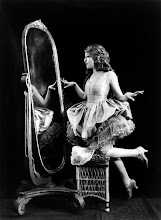 Silent Film was a revolution in the arts and set the stage for all modern filmmaking as we know it. They created Hollywood, the first celebrity culture in America and aboard, as well as revolutionized what the term “art form” meant. They provided a new medium for people to enjoy, setting the stage for television and therein the Internet. Yet, as culturally significant as Silent Film was, not a lot seems to be done to preserve these films or give modern audiences access to them.
Silent Film was a revolution in the arts and set the stage for all modern filmmaking as we know it. They created Hollywood, the first celebrity culture in America and aboard, as well as revolutionized what the term “art form” meant. They provided a new medium for people to enjoy, setting the stage for television and therein the Internet. Yet, as culturally significant as Silent Film was, not a lot seems to be done to preserve these films or give modern audiences access to them. Most older films are made using nitrate film. The nitrocellulose base of nitrate film not only decomposes steadily over time but can also be harmful to projectionists because of chemicals within it. This decomposition has made it increasingly difficult to restore films as well as locate them since many old films have been completely lost. There is no telling how much art or film history we have lost because of the disintegration of these precious reels.
 While many silent films are physically lost, the ones that we do have restored sometimes seem culturally lost. Very rarely do they show silent movies any more. You either have to seek out a showing at a local theatre or venue or catch them in rotation, usually late at night on Turner Classic Movies or another movie channel. Another option is to buy the films so you have them at your own disposal, but I have been hard pressed to find Silent Film collections at any of my local DVD retailers. A few websites, such as The Silent Era provides you with a list of “Lost Films” as well as DVDs of those films which have been restored. Another sight, Silents Are Golden, provides more resources on Silent Film including essays on their cultural impact, movie stills, posters, screening lists, and places where silents are being made available. In addition, Martin Scorsece has helped to found The Film Foundation, which works towards the preservation of classic films, tries to educate modern audiences on film preservation, and provides an abundance of film references.
While many silent films are physically lost, the ones that we do have restored sometimes seem culturally lost. Very rarely do they show silent movies any more. You either have to seek out a showing at a local theatre or venue or catch them in rotation, usually late at night on Turner Classic Movies or another movie channel. Another option is to buy the films so you have them at your own disposal, but I have been hard pressed to find Silent Film collections at any of my local DVD retailers. A few websites, such as The Silent Era provides you with a list of “Lost Films” as well as DVDs of those films which have been restored. Another sight, Silents Are Golden, provides more resources on Silent Film including essays on their cultural impact, movie stills, posters, screening lists, and places where silents are being made available. In addition, Martin Scorsece has helped to found The Film Foundation, which works towards the preservation of classic films, tries to educate modern audiences on film preservation, and provides an abundance of film references. These classic films are not only a part of our history and culture, but they are very much enjoyable to watch. Sure, the special effects may be nothing compared to modern CGI and some of the acting may seem overdone, but silent film is an art form of its era, something we can no longer recapture. Everyone working in modern television, film, or who even posts a video on the Internet owes a lot to those early Silent movies. Perhaps if modern filmmakers returned to their roots, they would learn a little bit about what current film needs.






No comments:
Post a Comment